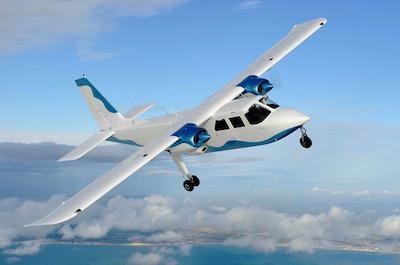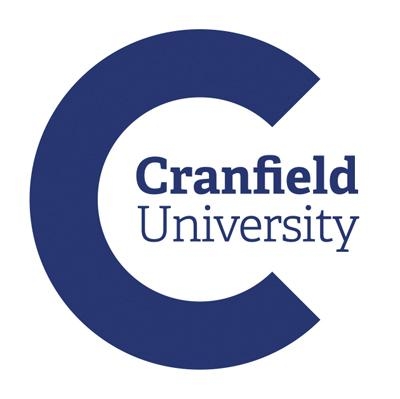Awards Grant To Cranfield Aerospace Solutions
CAeS, a leading aircraft integrator in green commercial aviation, has received the backing of the UK Government for a project to develop electric aviation. Project Fresson has received a grant of £9 million (approx. $11.6 million) to design, manufacture and integrate a hybrid-electric propulsion system into a 9-seat Britten-Norman (B-N) Islander aircraft, which is typically used on short flights such as island-hopping routes.

The grant is provided through the ATI Program: a partnership of the Aerospace Technology Institute (ATI), the Department for Business, Energy & Industry Strategy, and Innovate UK to maintain and grow the UK’s competitive position in civil aerospace design and manufacture.
"Project Fresson brings together a great partnership to develop innovative technology for a sustainable all-electric air transport solution for isolated islands," said Mark Scully, Head of Technology for Advanced Systems & Propulsion at the ATI. "The partners’ ultimate goal of delivering the first commercial passenger-carrying all-electric aircraft service in the UK will mark a significant breakthrough for all-electric propulsion.”
The Project Fresson team includes UK businesses: Rolls-Royce, who will be supplying the power management system; the Denis Ferranti Group, supplying the electric motors; Delta Motorsport, providing battery packs; WMG (University of Warwick), who will perform battery testing and characterisation, and Britten-Norman, the aircraft OEM (Original Equipment Manufacturer) providing the baseline aircraft and aircraft data/design support. CAeS parent Cranfield University will be researching key technology solutions vital for the 30-month project.
"The results of this exciting electric aircraft demonstrator project can be rapidly developed into an EASA/CAA (European Aviation Safety Agency/Civil Aviation Authority) certified modification kit, enabling the UK to lead the way with the first passenger-carrying sub-regional aircraft capable of all-electric flight," said Paul Hutton CAeS CEO. "The strength of the industrial partners involved in this project, are underpinned by the world-class aerospace/manufacturing research capabilities of Cranfield University. This is going to accelerate our green transport revolution.”

The Fresson project supports Rolls-Royce’s commitment to making aviation more sustainable. This electric flight technology demonstrator enables Rolls-Royce to introduce a new concept in aircraft-level power distribution control that optimises all the elements of the power and propulsion system.
"We are excited to be involved in this project, which combines our commitment to support the de-carbonisation of aviation with our ability to solve complex problems with pioneering solutions," said Alan Newby, Rolls-Royce, Director, Aerospace Technology & Future Programs. "Project Fresson is another valuable opportunity for us to remain a leader in delivering the electrification of flight, an important part of our sustainability strategy.”
"Cranfield University is recognized around the world for its Aviation Systems Integration capability and is focussed around research and development of zero-emission technologies. We are pleased to be a technology partner on Project Fresson which is at the forefront of turning the commercial use of electric aircraft into a reality,” said Professor Iain Gray, Cranfield University Director of Aerospace.
Following the demonstrator project, CAeS will go on to certify the modification through EASA to obtain a Supplemental Type Certificate. This will then be immediately available in the global market, allowing the current operators of the 400+ B-N Islanders to convert their aircraft reducing operating costs and their carbon footprint.
"At Britten-Norman we are committed to innovation which we support through a dedicated Research & Development team," said William Hynett, Chief Executive of Britten-Norman. "Our team is looking forward to working closely with Cranfield Aerospace Solutions and its other partners in driving forward this industry-leading green initiative programme for the electrification of the Islander.”
“Our aircraft makes an ideal launch platform for this program due to its renowned reliability and adaptability. We remain highly enthusiastic about the prospects of bringing this important capability to our vitally important short-sector market.”
In follow-on phases of CAeS’s green aircraft strategy the intention is to design and implement a similar modification, this time to a larger existing 19-seat sub-regional aircraft type, continuing with partners to design and build a new 19-seat aircraft. The design of the new aircraft will be optimised for emission-free propulsion, making use of the certified propulsion systems architecture from the earlier phases.
(Source: Cranfield University news release. Image from file)
 Unfortunate... ANN/SportPlane Resource Guide Adds To Cautionary Advisories
Unfortunate... ANN/SportPlane Resource Guide Adds To Cautionary Advisories ANN FAQ: Turn On Post Notifications
ANN FAQ: Turn On Post Notifications ANN's Daily Aero-Term (04.29.24): Visual Approach Slope Indicator (VASI)
ANN's Daily Aero-Term (04.29.24): Visual Approach Slope Indicator (VASI) ANN's Daily Aero-Term (04.28.24): Airport Marking Aids
ANN's Daily Aero-Term (04.28.24): Airport Marking Aids ANN's Daily Aero-Linx (04.28.24)
ANN's Daily Aero-Linx (04.28.24)




